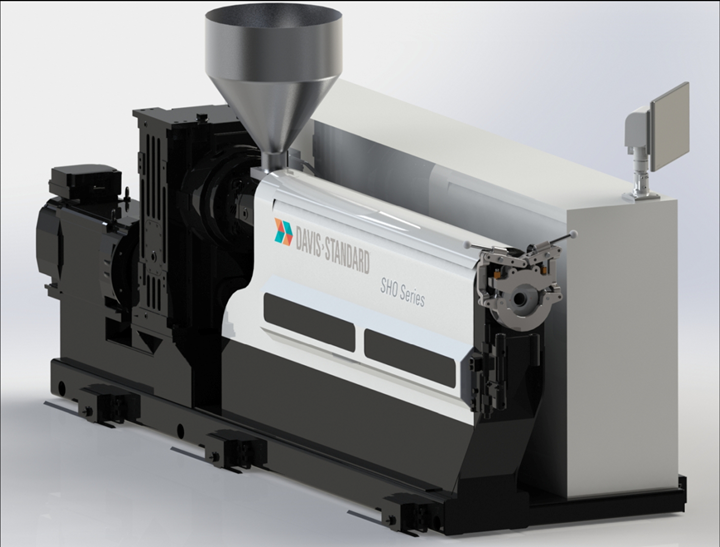Compact, High-Output Extruder
New extruder series features groove-feed section and offers up to 20% more output than previous designs.
The new SHO groove-feed extruder series from Davis-Standard has been built to save space while offering outputs up to 20% higher than existing models. The SHO is engineered with an optimized feed section and high-performance, energy-efficient DSB barrier screw. This is especially beneficial for high-viscosity HDPE applications such as pipe, where lower melt temperatures, reduced power consumption and improved energy efficiency are critical.
“Improving energy efficiency equates to tangible savings for your operation while reducing your carbon footprint,” said John Christiano, v.p. technology. “Groove feed extrusion technology contributes to improving your bottom line while providing uncompromising melt quality. The SHO builds upon our existing groove feed technology with a more streamlined, compact footprint and even greater performance in terms of output and energy savings.”

The SHO features Davis-Standard’s next-generation gearcase to optimize valuable production space along with a streamlined hopper, low-profile power panel and rugged base. All components are fully enclosed. Reported advantages include improvements in output, output consistency, melt quality, reduced purging/changeover time, and energy efficiency. It is available in sizes ranging from 2 to 6 in. (50 to 150 mm) with an L/D of 42:1.
Related Content
-
Single vs. Twin-Screw Extruders: Why Mixing is Different
There have been many attempts to provide twin-screw-like mixing in singles, but except at very limited outputs none have been adequate. The odds of future success are long due to the inherent differences in the equipment types.
-
What to Know About Your Materials When Choosing a Feeder
Feeder performance is crucial to operating extrusion and compounding lines. And consistent, reliable feeding depends in large part on selecting a feeder compatible with the materials and additives you intend to process. Follow these tips to analyze your feeder requirements.
-
How to Select the Right Cooling Stack for Sheet
First, remember there is no universal cooling-roll stack. And be sure to take into account the specific heat of the polymer you are processing.


